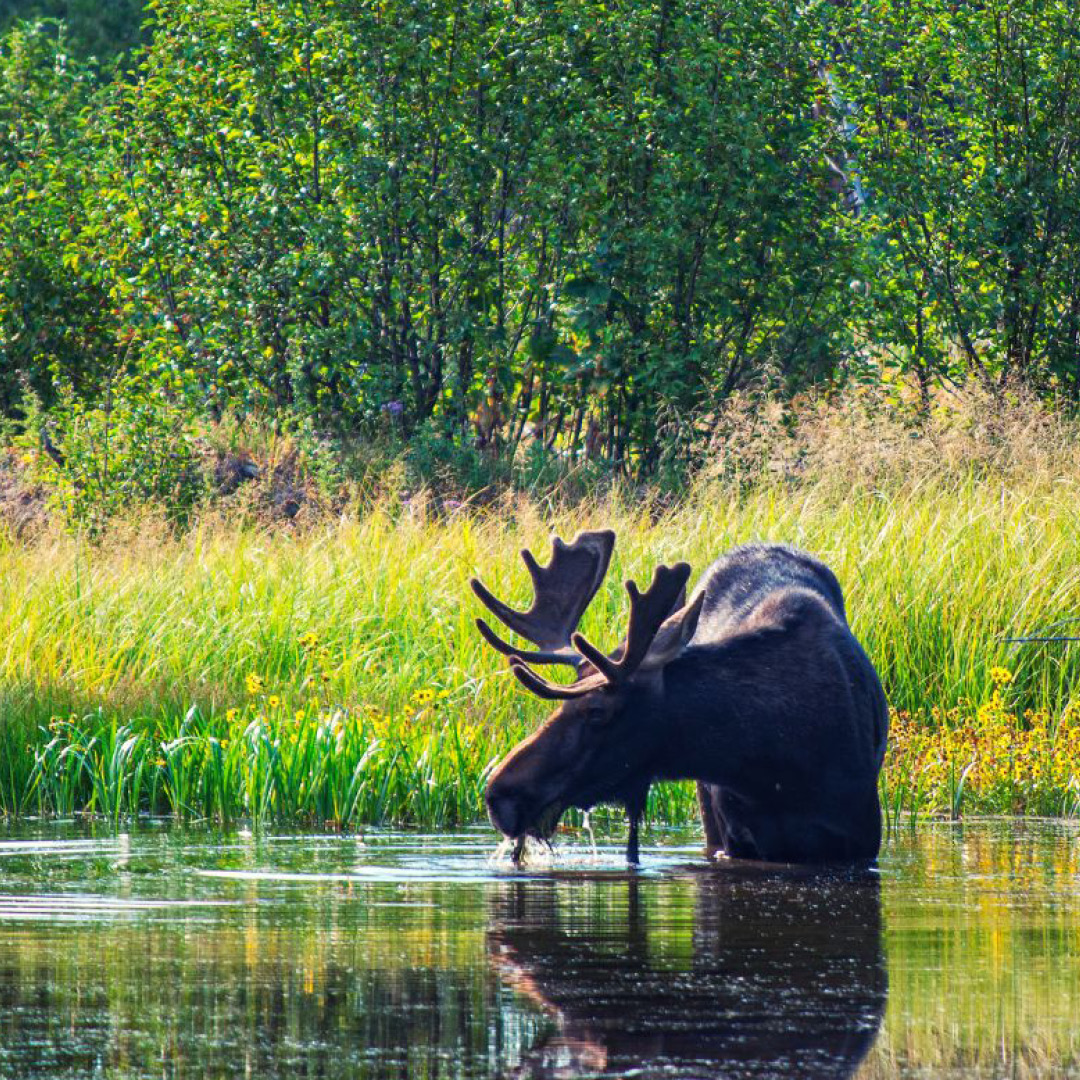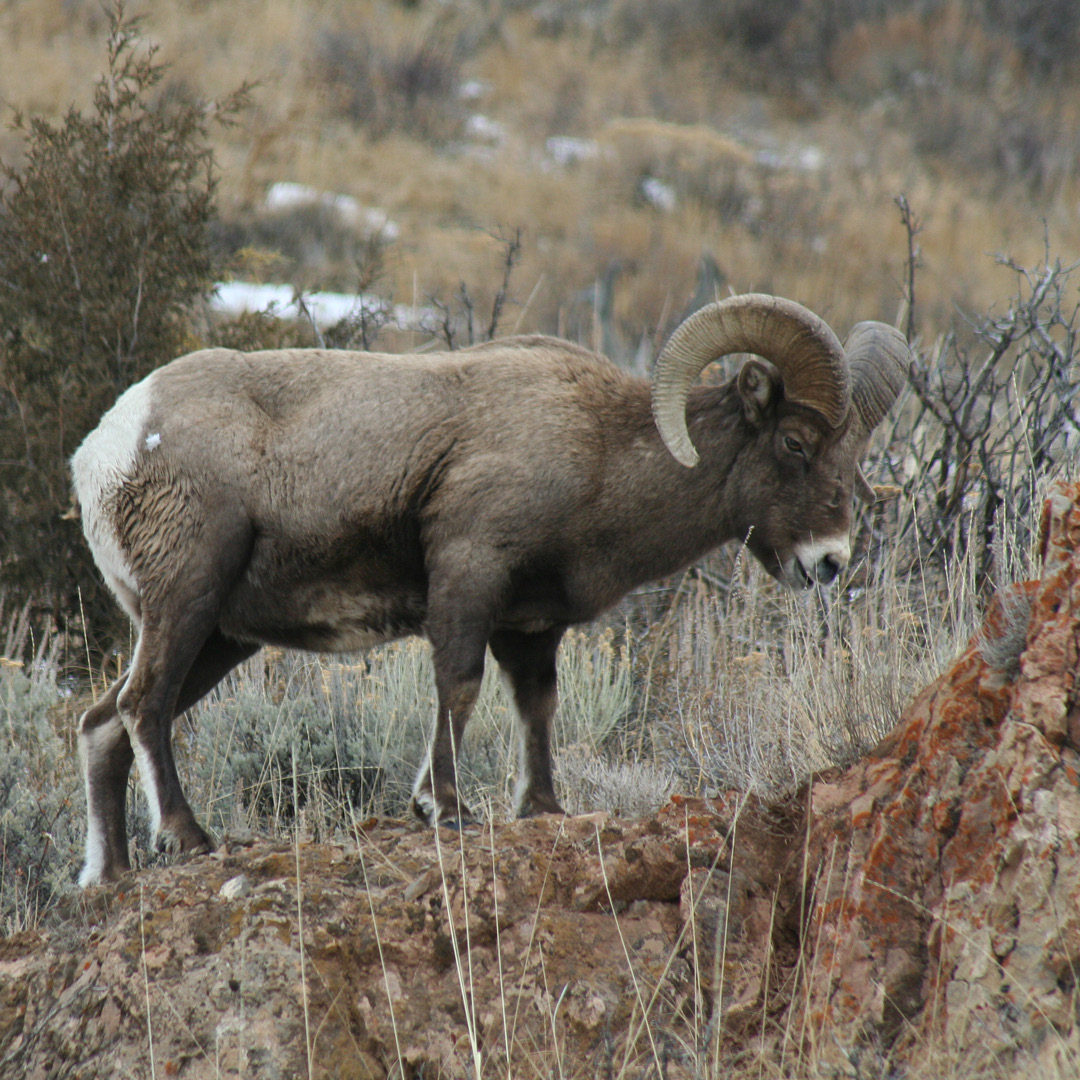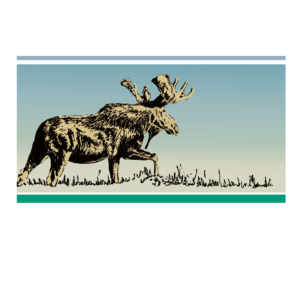Where to See Wildlife in Jackson Hole
The Best Places for Wildlife Sightings
Learn the best places for catching a glimpse at Jackson Hole’s famous wildlife
Here, you’ll find basic information on a few of the area’s most popular wildlife species as well as recommended spots to view wildlife during your visit to Jackson Hole. By using this map, we hope you’ll take away a bit about how natural habitat influences where and when certain species may be found, and why it’s important to preserve these habitats to protect wildlife into the future!

Moose
Moose are one of Jackson Hole’s most beloved species. Today, an estimated 400 individual moose comprise the Jackson Hole Moose Herd and can be seen year-round in Grand Teton National Park, the surrounding Bridger-Teton National Forest, and even in developed areas within the Town of Jackson itself.

Black Bears
In Grand Teton National Park and surrounding areas, black bears tend to prefer areas which are heavily forested. They are a tree climbing species and using woodland and adjacent habitats allows them to avoid potential conflict with grizzlies, which are more commonly found in open areas such as shrubsteppe habitats.

Bighorn Sheep
Today, the estimated sheep population in the West is a tiny fraction of what it once was. Wild sheep are especially susceptible to diseases like pneumonia, spread by domestic sheep, as well as competition from non-native species.

Bison
Weighing as much as 2,200 pounds and often traveling in large herds, bison aren’t hard to spot – assuming you can find them. One of the best places to observe some of the approximately 500 bison that inhabit Grand Teton National Park. One is along Highway 191, just south of Moran Junction.

Pronghorn
Pronghorn are a species intimately tied to Wyoming’s in-tact, sagebrush steppe habitat. Compared to the rest of the state, a relatively small number of these “American antelope” make their summer range in Grand Teton National Park, where their preferred habitat often overlaps with the Park’s bison herd.
Tips For Viewing Wildlife Safely

The Jackson Hole area is a uniquely wild place! Abiding by the follow during your visit will help keep you safe and benefit the wildlife that make their home here:
• Follow posted speed limits and expect wildlife on roadways.
• For your safety, keep the roadway clear by using pullouts or pulling completely off the roadway while viewing wildlife.
• Your food is your food. It is illegal to feed any wildlife.
• Always maintain a distance of at least 100 yards from bears and wolves, and 25 yards from other wildlife. If your actions are disrupting natural behavior, you are too close.
• Dogs are not allowed on trails in either Grand Teton National Park or Yellowstone. For more information, we recommend Grand Teton National Park’s official website.
Jackson Hole Wildlife Foundation
Being Wild Jackson Hole is an effort lead by the Jackson Hole Wildlife Foundation to help ensure survival of the wild spirit of this special place by embracing and promoting environmental stewardship, along with the values and actions that support it. We encourage visitors to learn about and participate fully in our conservation efforts.
Funded by:




